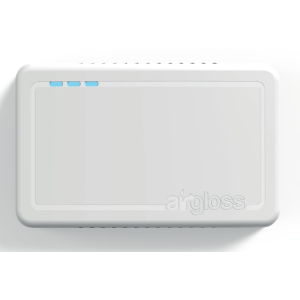The Building Regulations update January 2022
What it means for the Property Sector
From 1 January 2022, an update to the “The Building Regulations 2010 – Volume 2: Buildings other than dwellings: – Requirement F1: Means of ventilation” come into force.
Redrafting the original document was consulted upon in Spring 2020 on the advice of SAGE, as part of the response to the COVID-19 pandemic, and in recognition that the Built Environment needs to be more infection-resilient to airborne pathogens.
PP-L Biosafety’s Technical Director, Paul Waldeck offered comments into the consultation.
Paul commented that; “While the requirements under the January 2022 Building Regulations update are clear and defined, ventilation requirements have often been a grey area in the past…
“The consequences and liabilities of not getting ventilation correct, given the new regulations now mandate improvements to occupational health and safety through better infection prevention and control against pathogens are very significant indeed.”

Some of the key areas to consider are:
Applicability
When building work in an existing building includes work on ventilation, for example:
- building an extension
- adding a wet room
- replacing part of the ventilation system
When other building work is conducted that affects the ventilation, such as replacing windows and doors, is also covered.
Paul continues; “Draught exclusion is a market driver around a lot of improvement work to existing buildings. However, ensuring a building is properly ventilated to control infection risk is now legally required and forms part of the ventilation provision of a building. Draught exclusion might also reduce the indoor air quality of a building below the standards, and so, mitigations would have to be installed too.
“Listed buildings in conservation areas will be a particular challenge, as the requirements of conservation already have to be balanced with the requirements to make it fit for purpose or to change its use. Added to this, the new regulations state that work to a building in these categories should comply with the ventilation standards where reasonably practicable.”
Indoor Air Quality monitoring
A major change brought in by the new Building Regulations is that certain types and sizes of rooms in new buildings should have a means of monitoring the indoor air quality, such as CO2 monitors or other air quality sensors. These also must be “hard-wired”, rather than portable devices, which helps feed into building management system improvements too.
- Occupiable rooms in offices.
- Occupiable rooms where singing, loud speech or aerobic exercise or other aerosol-generating activities are likely to take place. These may include rooms, for example, in gymnasiums, other indoor sports venues, dance studios, and theatres
- Occupiable rooms where members of the public are likely to gather. These may include rooms, for example, in public buildings, hotels and gymnasiums.
- Occupiable rooms which are maintained at both low temperatures and low levels of humidity. These may include rooms used for chilled food processing and occupied cold stores.
Ventilation
As before, ventilation may be delivered through natural ventilation, mechanical ventilation, or a combination of both. The most substantial change to The Regulations which will impact significantly on the Built Environment is that the predominant use of recirculated air, as typically prevails in UK mechanically ventilated buildings, is no longer appropriate, UNLESS the ventilation system deploys germicidal filters i.e. HEPA Filters or UV-C technologies.
The new regulations state that ventilation must be delivered by:
- Systems capable of providing 100% outdoor air to the new levels to all occupiable rooms and common spaces, without recirculating air.
- Systems incorporating a UV-C germicidal irradiation system that can disinfect the air that is being recirculated. This type of system is commonly located within the heating, ventilation, and air conditioning (HVAC) system or ductwork.
- Systems designed so that they can incorporate HEPA filters, if required, which are able to provide filtration of the recirculated air.
On Item (b), Paul states; “The design, installation and maintenance of UVC enhanced ventilation systems is a new specialised area for the sector and requires specialist domain knowledge, so myself and other expert colleagues will be putting on CPDs in 2022 to help the market to respond.”
Regarding item (c), the requirement to incorporate HEPA filters, Paul is sceptical, saying “It is uneconomical to deploy HEPA filters for non-clinical and conventional new buildings and impractical to retrofit them into existing buildings due to the enormous amount of energy and plant upgrades needed. This will also prejudice other Net Zero compliance need, aimed at reducing carbon emissions too.”
In conclusion Paul states, “The changes to the Building Regulations are enormous and there is much to consider for those in the property and construction sectors.
“The market must now react and perform accordingly. We at PP-L Biosafety have been ready for some time and are able to support the needs and demands of the sector, to deliver low carbon infection-resilient buildings.”
Useful References:
https://www.ppl-biosafety.com/uvc-modelling-hvac/
For CPD’s, Training, and Sales contact: enquiries@ppl-biosafety.com
Technical Advice: paul.waldeck@ppl-biosasfety.com






Leave a Reply